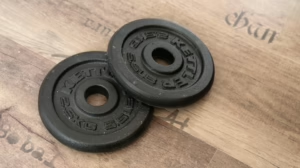Women and Hypertrophy: Breaking Down Barriers to Muscle Gain
In recent years, there has been a significant transformation in the fitness landscape, particularly regarding women and weight training. While historically women have been discouraged from lifting heavy weights due to misconceptions about femininity, strength, and the nature of muscle gain, current trends reflect a greater acceptance of women pursuing hypertrophy, the increase in muscle mass. This article explores the barriers that women face in the pursuit of hypertrophy, delves into the physiological and psychological aspects, and provides strategies for overcoming these obstacles.
Understanding Hypertrophy: The Basics
Hypertrophy refers to the growth and increase of the size of muscle cells. It occurs when the body experiences mechanical tension and metabolic stress during resistance training, leading to muscle fiber damage and subsequently, repair and growth. For women, this process has traditionally been shrouded in myths and misapprehensions, often leading to hesitance in engaging fully with resistance training.
The Science of Muscle Gain
Muscle hypertrophy can be classified into two primary types:
- Myofibrillar Hypertrophy: This involves an increase in the size of muscle fibers (myofibrils), resulting in denser muscle tissue and increased strength.
- Sarcoplasmic Hypertrophy: This focuses on increasing the volume of the sarcoplasm, which is the semi-fluid substance surrounding myofibrils and helps provide energy during muscle contractions.
Women possess the same potential for hypertrophy as men, yet societal norms and physiological misunderstandings often limit their engagement in activities that promote muscle growth.
Why Women Hesitate to Pursue Hypertrophy
Despite the numerous physical and psychological benefits of resistance training, women may still hesitate to train for hypertrophy. Several barriers contribute to this reluctance, including:
1. Societal Expectations and Stereotypes
The perception that weightlifting is primarily for men persists in many cultures. Women are often bombarded with messages advocating for thinness over strength, leading to a disconnect between the desire to gain muscle and societal standards of beauty. This stereotype can create an internal conflict for women who wish to pursue hypertrophy.
2. Fear of Bulking Up
A common misconception is that lifting heavy weights will result in substantial bulkiness. This fear is often exacerbated by the portrayal of female bodybuilders in the media. However, factors such as testosterone levels—which are significantly higher in men—play a crucial role in muscle gain, making it more challenging for women to achieve a bulked physique without the use of performance-enhancing drugs or extreme training regimens.
3. Lack of Knowledge and Access
Many women feel intimidated by gym environments that are often male-dominated. A lack of knowledge about proper weightlifting techniques and workout programs can impede their willingness to engage in hypertrophy-focused training.
4. Perceived Time Constraints
Women often juggle multiple roles, balancing work, family, and personal responsibilities, which can lead to time constraints that make engaging in a comprehensive resistance training regimen feel unmanageable.
The Physiological Differences: Women and Muscle Gain
Understanding the physiological differences between men and women can shed light on the muscle-gaining processes and counter the myths that discourage women from pursuing hypertrophy.
Hormones and Muscle Growth
Hormonal differences, particularly testosterone levels, can influence muscle growth. Men typically have higher testosterone levels, correlating with greater muscle mass and strength. However, women have their own hormonal advantages, particularly estrogen, which helps in muscle recovery and inhibits muscle breakdown.
Muscle Fiber Composition
Research indicates that women may have a greater proportion of slow-twitch muscle fibers, which are more resistant to fatigue and suited for endurance activities. While men may excel in explosive strength, women can benefit from focusing on strength training to develop their fast-twitch fibers, which contribute to muscle hypertrophy and overall strength.
Age and Muscle Gain
Age also plays a role in muscle development. As women age, particularly post-menopause, there is a decrease in hormone levels, which can impact muscle mass. Therefore, engaging in hypertrophy training becomes increasingly essential for women to maintain muscle mass as they age.
Psychological Barriers: Overcoming Mental Hurdles
While physical barriers to hypertrophy are significant, psychological factors also play a crucial role in a woman’s willingness to engage in resistance training.
Body Image and Self-Esteem
For many women, body image is intricately tied to self-esteem. Participating in hypertrophy-focused training can challenge this relationship, as individuals may initially feel uncomfortable lifting weights in a gym environment or worried about how their bodies will change. It is crucial to encourage a positive relationship with one’s body as a means of self-improvement, focusing on strength gains rather than solely on aesthetics.
Building Confidence
Engaging in resistance training can significantly boost confidence. Establishing clear, achievable goals and tracking progress can help foster a sense of accomplishment. Many women find that strength training not only improves physical health but also enhances their mental well-being and self-perception.
Creating a Supportive Environment
Support systems—whether friends, family, or training partners—can significantly influence women’s engagement in hypertrophy training. Encouragement from others, coupled with shared experiences, can create a nurturing community, making them feel more empowered to pursue and enjoy weight training.
Strategies for Empowering Women in the Pursuit of Hypertrophy
To dismantle these barriers and promote muscle gain among women, various strategies can be adopted:
1. Education and Awareness
Providing women with the knowledge regarding hypertrophy and strength training can diminish fear and misconceptions. Workshops, seminars, and access to credible resources can help educate women on the benefits of resistance training, effective techniques, and safety measures.
2. Tailored Training Programs
Creating programs specifically designed for women can address many concerns. These programs should emphasize not only hypertrophy but also individual preferences and fitness levels, enhancing both engagement and results.
3. Promoting Body Positivity
Emphasizing the importance of body positivity rather than merely aesthetic outcomes can create a more inclusive environment for women. Campaigns and movements advocating for strength and fitness at any size can help shift perceptions and encourage more women to engage in resistance training.
4. Encouraging Community Engagement
Fostering connections within gym environments—whether through group classes, training partners, or online communities—provides encouragement and accountability. Women are more likely to pursue hypertrophy when supported by others who share similar goals and experiences.
5. Utilizing Technology
Fitness apps and online platforms can offer women access to training programs, nutrition plans, and community forums. These tools can provide motivation and knowledge while promoting a sense of belonging and connection in a virtual environment.
Success Stories: Breaking the Stereotype
Inspirational success stories highlight the positive impact of hypertrophy on women’s lives. Athletes like CrossFit champion Katrin Davidsdóttir and powerlifter Jen Thompson have openly shared their journeys in strength training, breaking down stereotypes and redefining societal perceptions of femininity and strength.
These stories serve not only to motivate but also to demystify the process of muscle gain for women, reinforcing the message that strength is empowering regardless of size or shape.
Conclusion: A New Era for Women in Hypertrophy
The shift towards embracing hypertrophy in women is indicative of broader societal changes regarding gender norms and fitness. With a growing understanding of the physiological differences in how men and women gain muscle, combined with the dismantling of societal stereotypes around strength, women are increasingly stepping into their power.
By breaking down barriers—whether physical, psychological, or societal—women can fully engage in hypertrophy training, reaping the benefits of enhanced strength, improved body composition, and increased self-esteem. As this movement continues to evolve, it heralds a brighter future for women in the sphere of resistance training.
References
- Schoenfeld, B. J. (2010). Squatting 101: The Mechanics of Squatting. National Strength and Conditioning Association Journal.
- Strasser, B., & Schmidt-Trucksäss, A. (2016). Resistance Training in Diabetes and Pre-Diabetes: A Systematic Review and Meta-Analysis. Diabetes Research and Clinical Practice.
- Phillips, S. M., & Van Loon, L. J. C. (2011). Dietary Protein for Athletes: From Requirements to Metabolism. Journal of Sports Sciences.
- Biddle, S. J. H., & Woolf, R. (2008). Physical Activity and Youth: The Role of the Environment. Nutrition Bulletin.
- Stiegler, P., & Cunliffe, A. (2006). The Role of Diet in Performance Enhancement. Journal of Sports Sciences.
This article serves to encourage women to embrace resistance training as a crucial component of their fitness journey—essential not only for physical health but also for mental resilience and empowerment. The vision of a more inclusive fitness environment, free from outdated stereotypes, is on the horizon as more women discover the extraordinary benefits of hypertrophy.


























Add Comment